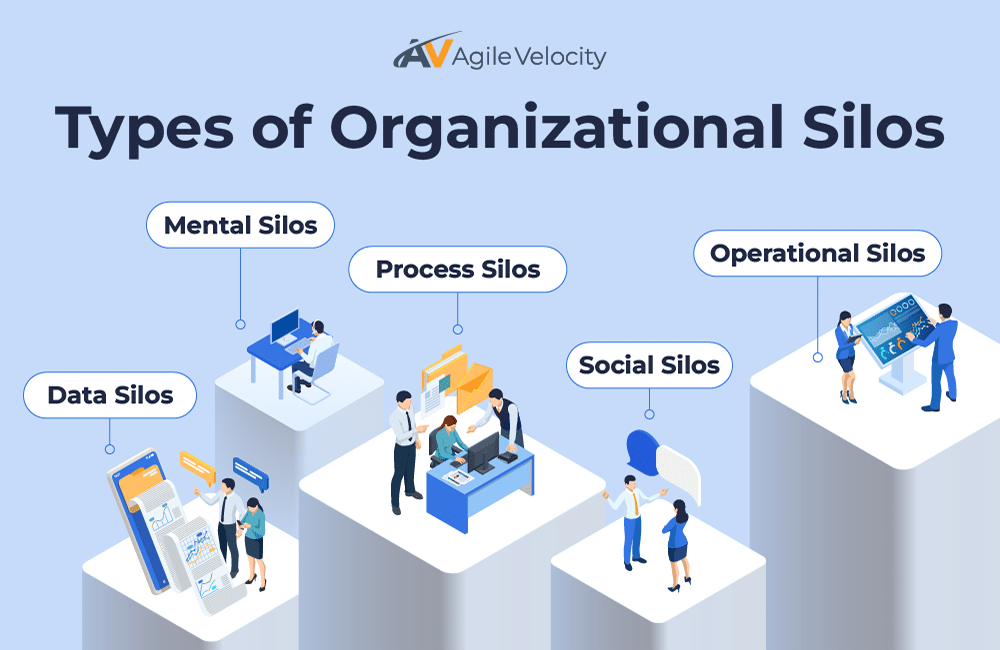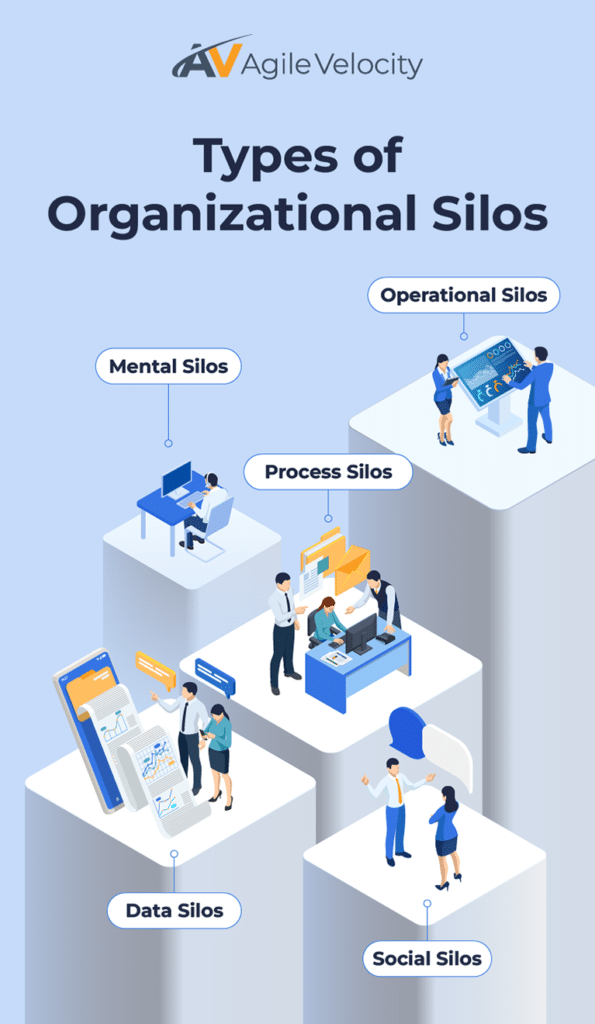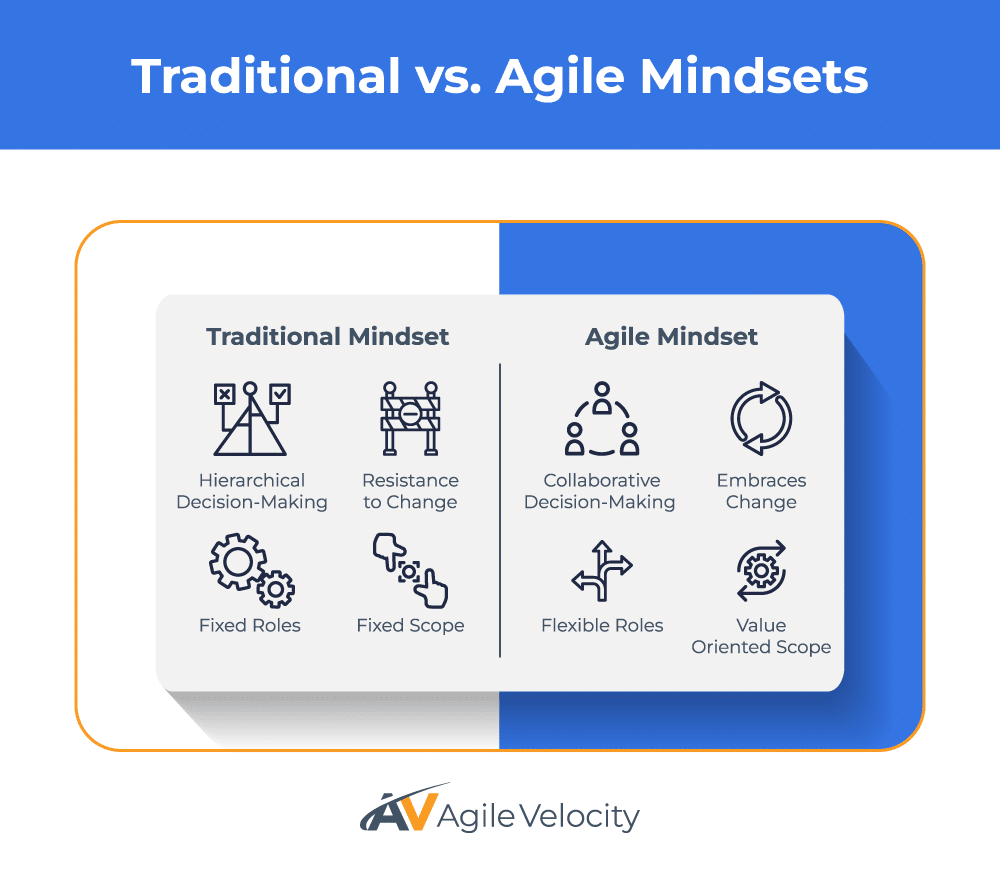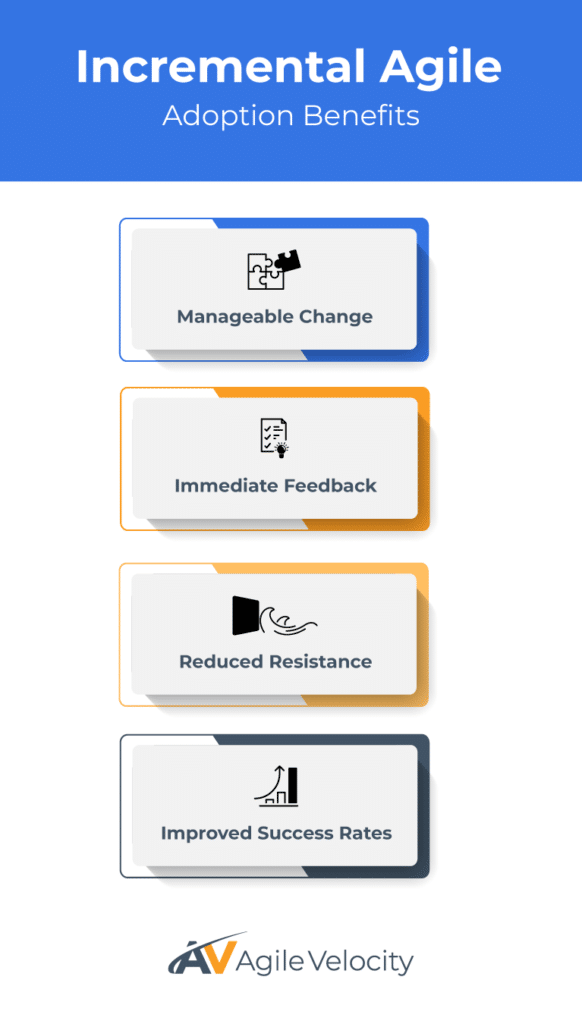Agile Transformations can fail due to a number of reasons—cultural misalignment, resistance to change, and broken processes are all common culprits. Imagine the impact of steering your organization towards a successful Agile Transformation, where collaboration thrives, and your team consistently delivers exceptional value.
Whether you’re an Agile coach, transformation manager, Product Manager, head of technology strategy, or a senior leader, understanding how to effectively implement Agile practices can significantly enhance organizational agility and business results.
This article provides actionable strategies to facilitate a successful Agile Transformation. We’ll explore the importance of removing organizational silos, fostering an Agile mindset, and embracing incremental adoption of Agile practices. With these powerful tips, you’ll be equipped to overcome common challenges and lead your organization towards lasting success.
What is an Agile Transformation?
Agile Transformation is the comprehensive process of realigning an organization’s structure, culture, and practices to fully embrace Agile principles. It’s not merely about adopting new processes; it’s about cultivating a culture that values adaptability, collaboration, and continuous improvement.
The significance of Agile Transformation lies in its ability to help organizations respond swiftly to market changes, enhance customer satisfaction, and improve team performance. However, the journey often encounters challenges, including resistance to change, unclear vision, misalignment with business objectives, and entrenched organizational silos.
Aligning transformation efforts with business outcomes is crucial. This alignment ensures that every step taken contributes directly to delivering value to customers and achieving organizational goals, thereby maximizing the impact of the transformation.
Common Pitfalls to Avoid in Agile Transformation
While Agile Transformation offers numerous benefits, organizations must be aware of common pitfalls that can derail the process.
Lack of Clear Business Goals
Without having a set of simple, well-articulated goals that are centered around improved business outcomes you may lose momentum anywhere along the way. Ensuring you regularly communicate meaningful goals that represent improved business performance as the outcome, you risk losing the buy-in of people critical to making and keeping the changes.
Lack of Leadership Support
Without strong and consistent support from leadership, Agile Transformation efforts can lose momentum. Leaders must actively participate in and advocate for Agile practices to reinforce their importance.
Resistance to Change
Employees accustomed to traditional workflows may resist adopting new Agile practices. Overcoming this resistance requires clear communication, training, and demonstrating the benefits of Agile Transformation.
Insufficient Training and Resources
Agile practices require proper training and resources. Organizations should invest in educating their teams and providing the necessary tools to support the transformation.
Scope Creep
Attempting to implement too many changes at once can overwhelm teams and dilute the focus of the transformation. It’s crucial to maintain a clear, prioritized roadmap and address changes incrementally.
Ignoring Organizational Culture
Agile Transformation is as much about cultural change as it is about process change. Neglecting the cultural aspects can hinder the adoption and sustainability of Agile practices.
By recognizing and addressing these pitfalls, organizations can navigate their Agile Transformation more effectively and achieve lasting success.
Avoid Unnecessary Setbacks
Understanding Organizational Silos
Organizational silos are divisions within a company where departments or teams operate in isolation, prioritizing their own goals over collective objectives. These silos create communication barriers, hinder collaboration, and lead to inefficiencies.
Conway’s Law states that the structure of systems reflects the communication structures within the organization.
EXAMPLE: Historically, companies like Sony struggled to evolve their products due to internal silos, which fragmented their ability to respond to market demands. The “silo mentality,” prevalent in Sony’s organizational culture, created divisions that acted independently rather than collaboratively. This often leads to a lack of effective communication and poor decision-making, allowing competitors to capture market share.


Types of Organizational Silos
- Mental Silos: Resistance to sharing knowledge and information.
- Social Silos: Limited collaboration among teams.
- Data Silos: Restricted flow of information between departments.
- Process Silos: Departments focusing on their outputs rather than customer-centric outcomes.
- Operational Silos: Structural barriers that impede collaboration.
These silos can lead to misaligned strategies, duplicated efforts, reduced innovation, and a diminished ability to respond to customer needs promptly.
5 Strategies for Removing Organizational Silos
Breaking down silos is essential for fostering an environment where Agile practices can thrive. Here are practical strategies to eliminate silos and enhance collaboration:
1. Encourage Cross-Functional Collaboration
Promote a culture where teams from different departments work together towards common goals. Cross-functional teams bring diverse perspectives, fostering innovation and improving problem-solving capabilities. For example, integrating marketing, sales, and development teams can lead to more cohesive product strategies and faster response times to market feedback.
2. Promote Transparency and Open Communication
Establish channels for open communication across the organization. Regular inter-departmental sessions and collaborative platforms facilitate information sharing and build trust among teams.
3. Leverage Tools to Connect Teams
For a successful Agile Transformation organizations must focus on breaking down silos by providing tools that connect teams and systems. This allows organizations to visualize dependencies, track collective progress, and ensure alignment with business outcomes. This connectivity fosters a unified approach to problem-solving and strategic planning. Ensuring that all teams, business and technology, are using the same tool can go a long way toward making work visible and encourages knowledge sharing.
4. Develop Shared Goals and Metrics
Align departmental objectives with overarching business goals. When teams understand how their work contributes to the bigger picture, they’re more likely to collaborate and support each other. Implementing shared metrics ensures that all departments are measured against the same standards of success, promoting a collective effort towards common objectives.
5. Foster a Culture of Continuous Improvement
Encourage teams to regularly reflect on their processes and seek ways to improve. This mindset promotes adaptability and openness to change, which are crucial for Agile success. Facilitating regular retrospectives and feedback sessions helps teams identify inefficiencies and implement actionable improvements. Doing this in larger groups (such as the System Demo event in SAFe) can help to further reduce silos.
The Importance of a Mindset Shift in Agile Transformation
A successful Agile Transformation requires more than just new processes; it demands a fundamental shift in mindset. The Agile mindset embraces values like collaboration, customer focus, adaptability, and continuous learning.


Traditional vs. Agile Mindsets
- Traditional Mindset:
- Hierarchical Decision-Making: Decisions are made top-down.
- Resistance to Change: Prefers established processes.
- Fixed Roles: Strict job descriptions with little cross-functionality.
- Fixed Scope: Decisions are made well in advance of having meaningful market feedback and are adhered to until the full scope is delivered.
- Agile Mindset:
- Collaborative Decision-Making: Empowers teams to make decisions.
- Embraces Change: Sees change as an opportunity.
- Flexible Roles: Encourages team members to take on various responsibilities.
- Value Oriented Scope: The business outcomes may be determined in advance but the work needed to deliver them is not. Scope changes based on market feedback to help ensure maximum value.
The impact of embracing an Agile mindset is profound. It leads to increased innovation, better team dynamics, and stronger alignment with customer needs.
Growth Mindset vs. Fixed Mindset
A growth mindset believes abilities can be developed through dedication and hard work, which is essential for Agile adaptability and continuous improvement. Conversely, a fixed mindset believes abilities are static and unchangeable, hindering Agile Transformation and innovation.
Traditional vs. Agile Leadership Styles
- Traditional Leadership: Command-and-control, focuses on directives and maintaining the status quo. “This is what you should do” is a good way to characterize traditional leadership and decision making models.
- Agile Leadership: Facilitates growth, fosters psychological safety, and encourages team autonomy. A fundamental aspect of Agile leadership is that Agile leaders do not micromanage. Instead, they focus on fostering environments of trust and collaboration. “What do you think you should do?” and a series of powerful questions characterizes Agile leadership.
Leaders embodying Agile values can significantly influence the success of the transformation by setting the tone and modeling behavior for the entire organization.
Agile Mindset Principles
- Respect for All Team Members: Cultivate a culture of respect and psychological safety.
- Optimized and Sustainable Flow: Focus on continuous improvement and incremental delivery.
- Encouragement of Team Innovation: Empower team members to innovate and experiment.
- Focus on Relentless Improvement: Regularly reflect on and refine processes for better outcomes.
These principles guide organizations in creating an environment conducive to Agile practices and sustained success.
Encouraging a Shift to an Agile Mindset
Fostering an Agile mindset involves deliberate efforts across the organization, which require both leadership commitment and active participation from all team members. It starts with cultivating a culture that values collaboration and adaptability, enabling employees to feel empowered to embrace change and explore innovative solutions. By embedding Agile principles into daily operations and decision-making processes, organizations can drive a gradual shift in mindset that aligns with long-term transformation goals
Provide Training and Workshops
Educate teams about Agile principles through training sessions and workshops. Understanding the “why” behind Agile practices helps in embracing the change wholeheartedly. Training can include hands-on exercises, simulations, and real-world scenarios to reinforce learning.
Lead by Example
Leadership should embody Agile values, demonstrating collaboration, adaptability, and openness to feedback. When leaders actively participate in Agile practices, it encourages team members to follow suit and embrace the transformation.
Create a Safe Environment for Experimentation
Encourage teams to try new approaches without fear of failure. A culture that accepts mistakes as learning opportunities fosters innovation and agility. Implementing pilot projects and allowing teams to experiment can lead to valuable insights and advancements in Agile practices.
Build High-Performing Teams
The Approach of Incremental Adoption in Agile Practices
Adopting Agile practices incrementally enables organizations to methodically introduce change, minimizing disruption while fostering acceptance and comprehension within teams. By taking small, manageable steps, organizations can evaluate the impact of each change, refine strategies based on feedback, and build on successes, thereby ensuring a smoother implementation process. This gradual transition not only reduces resistance but also enhances the organization’s ability to adapt to ongoing market and customer demands through continuous improvement.


Benefits of Incremental Adoption
- Manageable Change: Smaller changes are easier to implement and adjust.
- Immediate Feedback: Teams can learn quickly from early iterations.
- Reduced Resistance: Gradual adoption minimizes pushback from stakeholders.
- Improved Success Rates: Incremental changes have higher success rates compared to “big bang” approaches.
Risks of a “Big Bang” Transformation Approach
Adopting Agile all at once, known as a “big bang” approach, often leads to high failure rates. According to Martijn Oost, many big bang Agile Transformations fail due to cultural misalignment, resistance to change, and superficial implementation.
These insights highlight the importance of a phased approach to Agile Transformation, where organizations can address challenges incrementally and build momentum for broader adoption.
Best Practices for Embracing Incremental Adoption

Develop Agile Roadmaps
Create a customized roadmap that outlines the steps for Agile adoption. Roadmaps help businesses to prioritize actions aligned with business objectives, ensuring a structured approach. A well-defined roadmap provides clarity on the transformation journey, facilitating better planning and execution.
Start with Pilot Projects
Begin with pilot teams or projects to test Agile practices. Success in these areas can build momentum and provide valuable insights for broader implementation. Pilot projects serve as a proof of concept, demonstrating the benefits of Agile to stakeholders and encouraging wider adoption.
Align Incremental Steps with Business Objectives
Each incremental change should contribute directly to delivering value. This alignment keeps the transformation focused and meaningful. By ensuring that every step aligns with business goals, organizations can maintain clarity and purpose throughout the transformation process.
Utilize Agile Assessment Tools for Ongoing Improvement
Regular assessments help in identifying areas for improvement and offer insights into team capabilities and guide next steps. Continuous assessment and feedback loops enable organizations to refine their Agile practices and achieve sustained improvement. Using a tool such as Path to Agility Navigator can greatly aid in creating actionable insights and understanding what is and is not working.
The Role of Tools in Agile Transformation
Software that supports organizations in their Agile journey can help facilitate iterative development and ongoing evaluation. These tools enhance agility by automating feedback loops, offering real-time analytics, and streamlining processes, which enable teams to identify and address inefficiencies quickly. Additionally, they assist in aligning teams with organizational goals, fostering a culture of constant enhancement and innovation, which is essential for a successful Agile Transformation. It can help provide insights for things like:
- Real-Time Analytics: Provides data-driven insights for decision-making.
- Actionable Roadmaps: Translates assessments into prioritized action plans.
- Progress Tracking: Helps in documenting and communicating progress.
- Adaptability: Enables quick adjustments based on feedback and changing needs.
These functionalities are essential for maintaining momentum and ensuring that Agile Transformation efforts remain aligned with evolving business objectives.
Path to Agility Navigator® as a Catalyst for Transformation
Path to Agility Navigator is more than a software tool; it’s a comprehensive solution designed to facilitate Agile Transformation.
Key Features Supporting Transformation
- Agile Assessment Tools: Evaluate organizational capabilities and identify improvement areas.
- Roadmap Generation: Convert assessments into prioritized, actionable plans.
- Progress Tracking: Utilize intuitive reporting tools to document and communicate progress.
- Generate Reports: Communicate progress effectively to stakeholders.
- Educational Resources: Access blogs, webinars, and eGuides to support continuous learning.
These features provide a robust framework for managing Agile Transformation, ensuring that organizations can navigate the complexities of change with confidence. By leveraging Path to Agility Navigator, organizations can gain deeper insights into their Agile Transformation, ensuring that each step is aligned with their strategic objectives and ultimately enhancing the organization’s ability to sustain its transformation.
How It Enhances Organizational Agility
By connecting teams and systems, Path to Agility Navigator helps organizations:
- Break Down Silos: Foster collaboration across departments.
- Shift Mindsets: Encourage adoption of Agile values and principles.
- Adopt Incrementally: Support a phased approach to implementing Agile practices.
- Measure Progress: Provide clear metrics and reports to track transformation success.
- Ensure Alignment with Business Objectives: Align every Agile practice with the overarching goals of the organization.
Through these enhancements, Path to Agility Navigator acts as a catalyst, driving sustained agility and continuous improvement within organizations.
Request a Demo
To ensure that Agile Transformation efforts are yielding the desired outcomes, it’s essential to establish metrics and regularly assess progress. Path to Agility Navigator provides tools for tracking important metrics and progress towards achieving desired business outcomes, offering real-time analytics and reporting features that help organizations measure the impact of their Agile Transformation. By continuously monitoring these metrics, organizations can make informed decisions and adjustments to optimize their Agile practices.
Ready to Transform Your Approach to Agile?
Achieving a successful Agile Transformation demands more than just new processes; it requires a concerted effort to remove organizational silos, foster an Agile mindset, and embrace incremental adoption. By focusing on these areas, organizations can enhance their agility, align more closely with business objectives, and deliver greater value to customers.
Agile coaching and training combined with tools like Path to Agility Navigator play a crucial role in this journey. By providing insights, actionable plans, and progress tracking, this guidance enables organizations to navigate the complexities of transformation effectively. Additionally, measuring success through key performance indicators and avoiding common pitfalls ensures that Agile Transformation efforts are sustained and impactful.
Start your journey with Agile Velocity today and witness the difference in your team’s performance and customer satisfaction.



